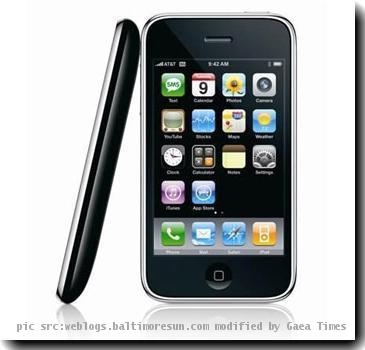Which is more useful when you’re on a trip, a travel guidebook or an app for your smart phone?
By Fritz Faerber, APThursday, March 18, 2010
Which is more useful, a guidebook or a travel app?
LONDON — A comprehensive travel guidebook can feel like a brick in your luggage. Yet smart phone travel guides are not always a good alternative. They can overwhelm users with potentially unreliable user-generated content or underwhelm them with a flashy interface and little true substance.
But two wildly different brands — Lonely Planet and Wallpaper — offer useful additions to the traveler’s library — both in printed and virtual forms. On a recent work trip to London, I compared the printed guidebooks with their respective iPhone versions.
As a result of my experience, I intend to amend my customary strategy of taking two guidebooks on any family vacation — a massive comprehensive book for use on flights and trains and when stopped for the night, and a smaller, finely tuned guide to an activity or city that is light enough to carry around. Instead, I’ll keep the massive tome for reference, but replace the lighter guide with one on my mobile phone.
Wallpaper guides are similar in style to their parent publication, a design, fashion and lifestyle magazine. When I picked up the London print guide, I was immediately taken by the simple cover design, slick, image-intensive interior layout, succinct writing and small, lightweight size.
The smart design carries over to the $3.99 iPhone app. Upon opening, the first option is a beautiful aerial panorama photo of London, with some landmarks labeled. The interface is fairly intuitive — letting the user look for shopping, lodging or nightlife or dive into London’s neighborhoods and see the highlights.
But sleek comes at a price — the guide leaves many staples out including the British Museum, Tower of London and Big Ben.
“Our guide is presented as an edit. It’s not trying to be all things to all people,” said Neil Sumner, digital director of Phaidon, which publishes the guides and produced the app.
Sumner says the Wallpaper guides are intended to offer an insider’s taste of a city for what he describes as a “switched-on urban traveler.” The guide would help someone pick a few highlights for a 48- or 72-hour visit.
He is proud of the guide’s “bespoke photography,” which gives users a feel for each suggested stop.
The app contains all the information from the print edition, while providing frequent editorial updates. It also enables users with an international data plan to map locations.
I typically am annoyed by advertisements in apps, especially purchased apps. But Wallpaper’s partner, Rolex, actually offers something useful at the bottom of each page: the time in London.
Shifting gears, Lonely Planet offers what one would expect of the travel guide giant: comprehensive editorial information and valuable tips.
The $15.99 iPhone app (some cities are available for Google Android phones) contains all the information packed in more than 400 pages in the print version. Upon opening the app, you see a table of contents like in the printed edition. If you’ve enabled location services on the phone, you can also search for nearby points of interest. There is also a filterable map of every listing in the city.
This app’s strength is the quality of its content. This is Lonely Planet’s bread and butter — comprehensive guides to help travelers navigate points unknown. If you like and trust the Lonely Planet books, this app offers the same quality, with detailed information. If you like a spot, add it to your favorites by clicking on the heart icon.
The breadth of content was useful when I met a former colleague for lunch. After our meal we decided to hit a pub, but didn’t know the part of town well. Taking out the iPhone and using the Lonely Planet app, I found a cozy pub nearby and followed the map, though I did encounter a couple of bugs that crashed the map.
Lonely Planet’s Matthew Cashmore acknowledges there are some bugs, but says the company is “releasing updates all the time and working hard to fix any problems.”
Over the past year and a half, the smart phone guides have grown to 25 percent of Lonely Planet’s city guide sales. But Cashmore says that doesn’t mean printed books will vanish.
“The thing about guidebooks is they are very good at what they do. You can take notes in them, tear out a page, read them on the plane. If they get wet, you can put them on a radiator. They are the perfect travel device.”
He says the apps are ideal as a download in an Internet cafe if, for instance, you are in London and decide to take a quick trip to Paris or another city. As such, they can readily supplement a traditional printed book.
Tags: Communication Technology, Consumer Electronics, England, Europe, London, Mobile Communications, Travel, United Kingdom, Western Europe

